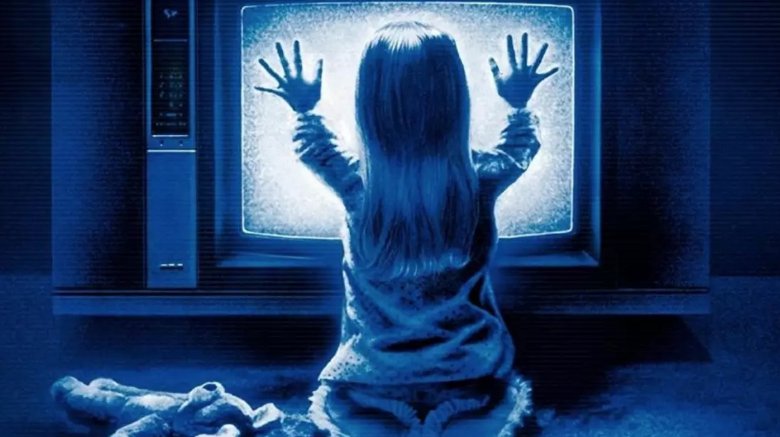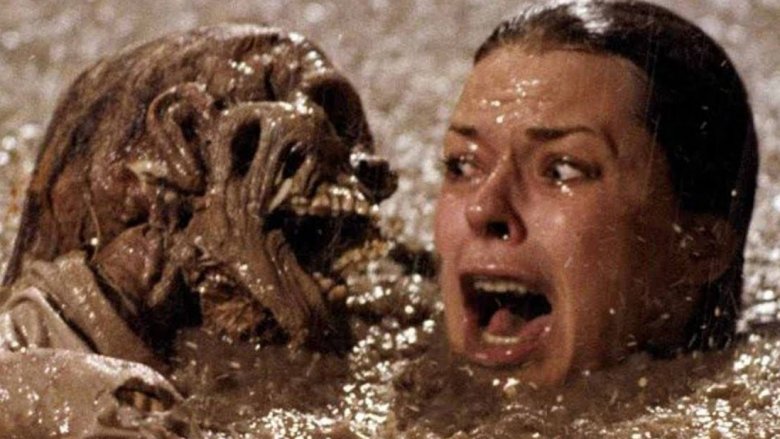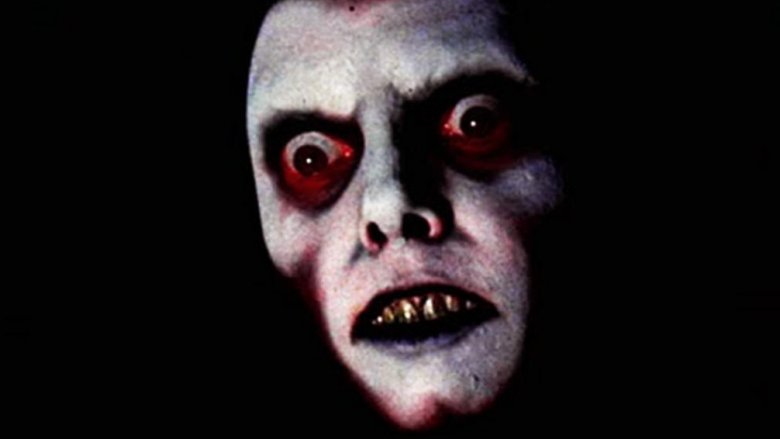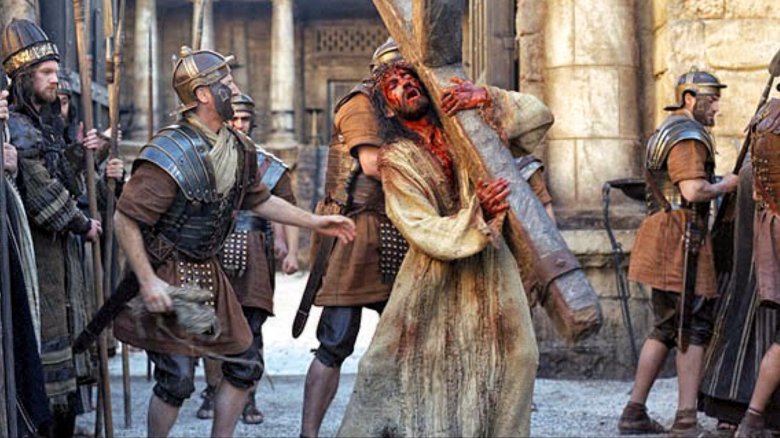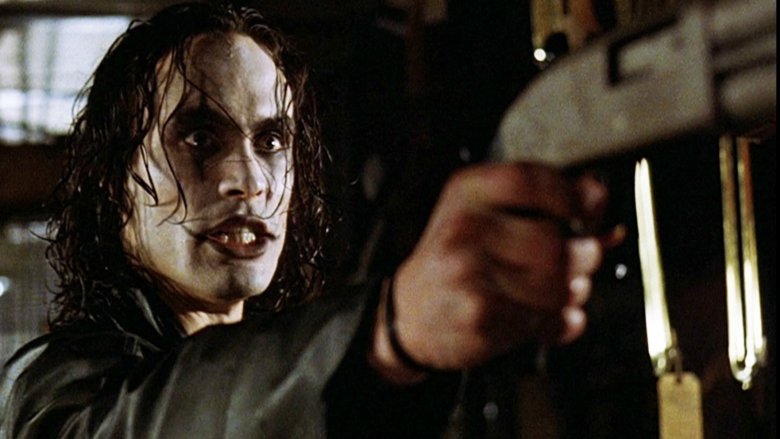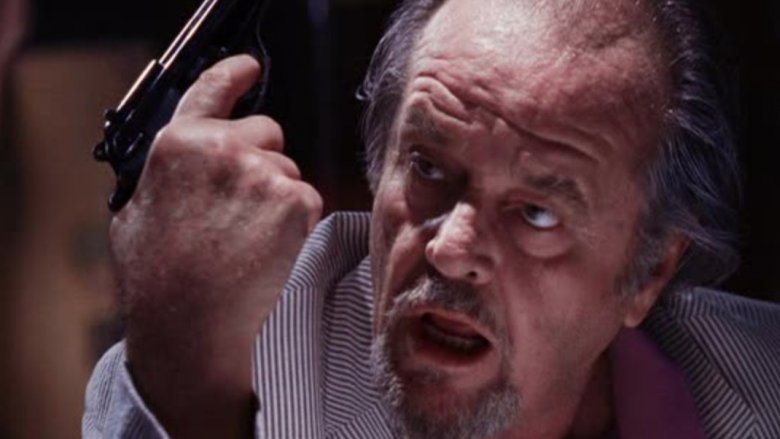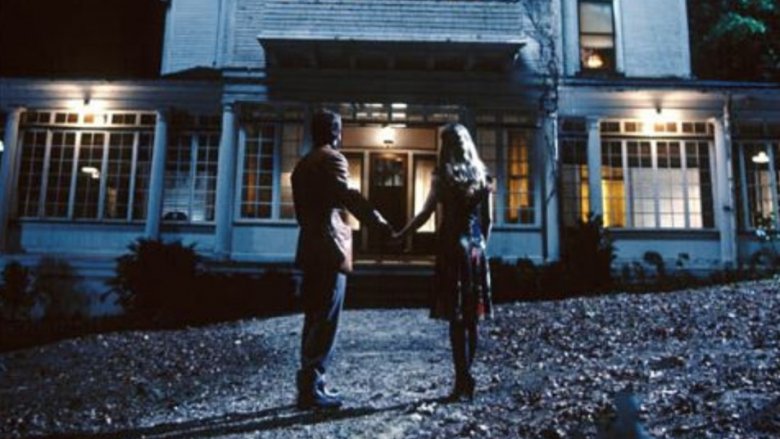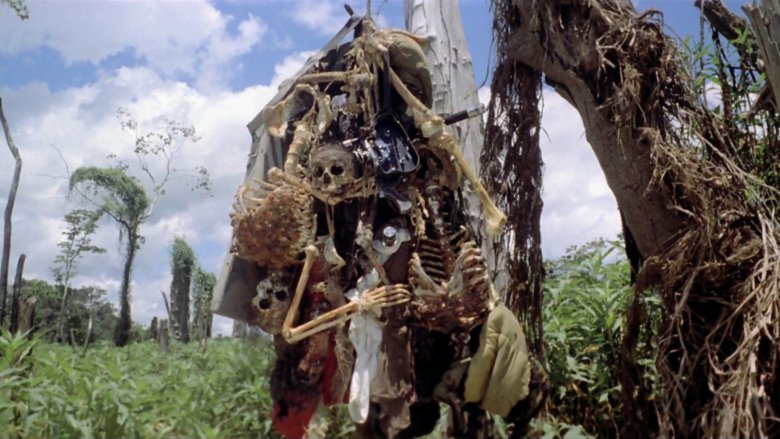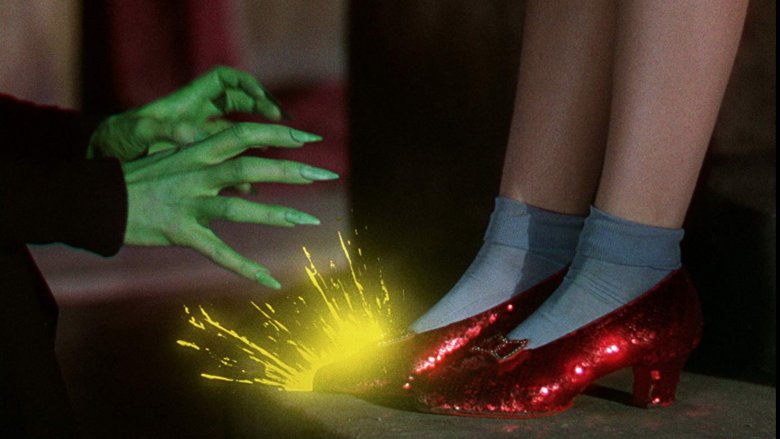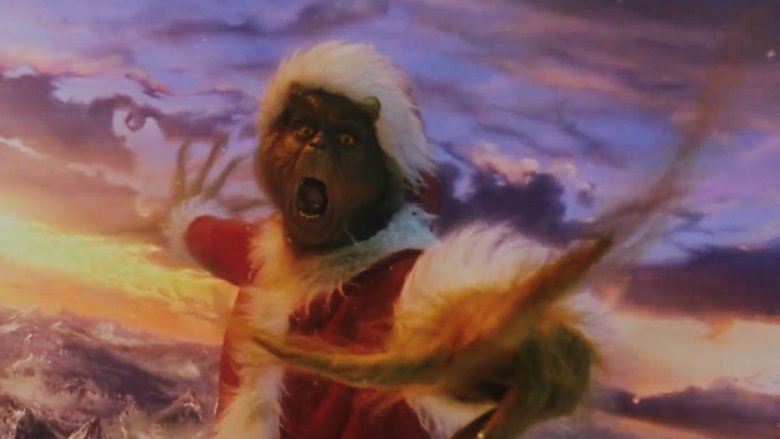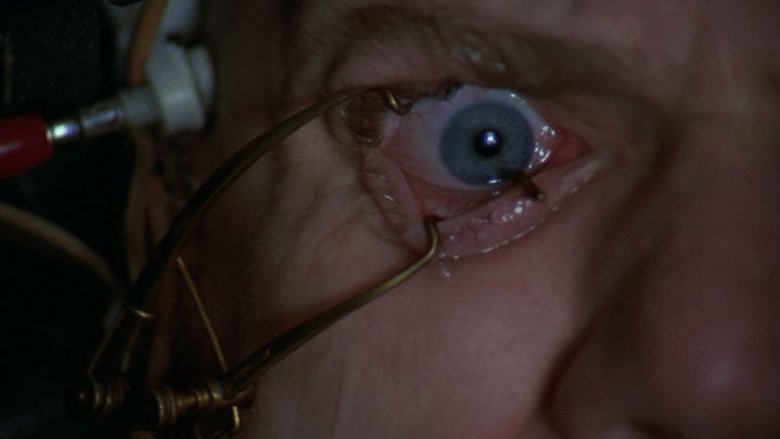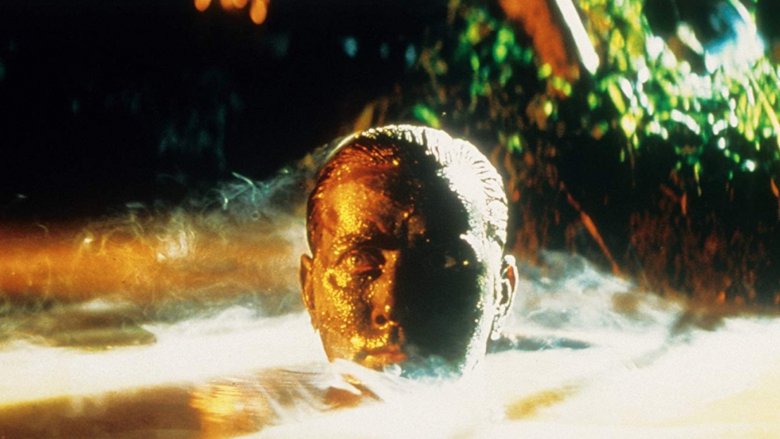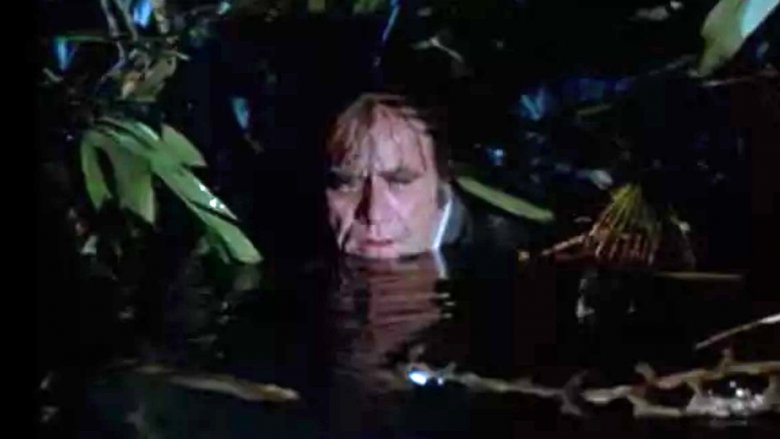The Most Bizarre Things That Happened While Filming
Filmmakers routinely work under insane stress, unbendable deadlines and unbelievable conditions. This is true whether it's a few friends making a short skit over the weekend, a modestly budgeted indie, or a multi-million Hollywood tentpole. You're staring at the clock right now wondering when the workday is going to end. They're staring at the clock hoping they can get this $500,000 scene filmed before the 100-person crew is legally obligated to leave in 43 minutes.
Filmmaking is a challenge even if things are going smoothly... but what if they aren't? What about when bizarre things go on behind the scenes, events that are even stranger than anything being committed to celluloid? Hollywood history is filled with these strange tales. Some bizarre occurrences happen because of people and some because of nature, while some may even be the work of supernatural forces.
As they say, the only difference between fiction and nonfiction is that fiction has to make sense. See for yourself how the truth is often stranger than fiction with this look at some of the most bizarre things to happen while filming.
The real skeletons are heeeeeeeere
Spoiler Alert: In Poltergeist, an unsuspecting family accidentally buys a house on a sacred burial ground. They probably got a good deal and given California's home prices, so who can blame them? Alas, the mom, played by JoBeth Williams, finds herself in a swimming pool with unearthed skeletons. As it turns out, this was an icky case of reality imitating fiction.
According to Williams, "I would have to go into this huge tank of what I thought were mud with these skeletons... I thought were plastic, but later found out they were real skeletons."
Yep, apparently using plastic skeletons was too expensive, so the filmmakers used the real thing. The human skeletons came from a medical supply company. While Texas Chain Saw Massacre maven Tobe Hooper is credited as Poltergeist's director, Hollywood lore says it was actually ghost-directed by the film's producer, Steven Spielberg. So at roughly the same time Spielberg was enchanting millions with the cuddly alien E.T., he was filming human skeletons in a pool. Presumably, they weren't in the Screen Actors Guild.
Don't mess with Pazuzu
Never make a deal with the Devil... unless it's a movie deal, of course! The Exorcist is a certifiable masterpiece and was the first horror film to be nominated for an Academy Award for Best Picture. It lost to The Sting, and screenwriter William Peter Blatty's diatribe about the snub is worth an honorable mention for bizarre things.
Even a public meltdown can't compete with what happened during filming, however. Star Ellen Burstyn suffered a permanent spinal cord injury during a stunt filmed for the scene when Linda Blair, playing her Pazuzu-possessed daughter, throws her on the floor. Filming was delayed for six weeks after the set burned down. But most disturbing of all were the multiple people who were killed during or just after the production. These include Jack MacGowran, who played Linda Blair's grandfather, who died one week after the film's release, as well as a night watchman on set and a special effects expert. Things got so bizarre, Father Thomas M. King, a Jesuit Priest based in Washington D.C. where the film takes place, was called to bless the set.
As strange as all this was, nothing can compare to the experience of watching Exorcist II: The Heretic, one of the worst sequels ever made.
Electric Passion
When it comes to smiting film sets, the movie gods are agnostic. For while The Passion of the Christ is notorious for the controversy it caused, there was a lot of calamity caused on set. Mel Gibson's self-financed Biblical epic was a cultural lightning rod in 2003 — and apparently its star was, too.
Jim Caviezel, who played Jesus in the film, was struck by lightning while performing the Sermon on the Mount. Caviezel wasn't the only one. Assistant Director Jan Michelini was struck not once, but twice, the first time while standing under an umbrella, the second time while coming to Caviezel's aid.
Well, at least that was all Caviezel had to endure during the making of this film, right? Yeah, not so much.
Very few stars in film history have suffered more for their art than Caviezel. Besides being struck by lightning, he was hit twice by errant whips during the lashing scene; had his shoulder dislocated while carrying the cross; suffered migraines from having his eye cosmetically shut; and got a lung infection and pneumonia from hanging on a cross with 25-degree temperatures and 30-knot winds.
Despite all of his suffering, Caviezel gave a moving performance that even the film's critics admired... though not enough to nominate him for a Best Actor Oscar. While that snub had to sting (albeit not as much as an errant whipping), the film being embraced by the faithful was certainly more important to the devout Catholic Caviezel.
A family's tragedy repeats
Based on James O'Barrs' underground 1989 comic, The Crow has become one of the most famous cult movies ever, though ultimately for tragic reasons.
In the film, Eric Draven (Brandon Lee) is murdered by thugs, only to seek vengeance after gaining spectral superpowers. During the pivotal scene when Draven is killed, Lee was supposed to be shot by a revolver loaded with blanks, but a fragment of a dummy bullet used in another scene was still in the barrel. The blank charge propelled the fragment of a .44 Magnum bullet into Lee, striking him in the abdomen with the same force as if the gun were loaded with a live round. He was rushed to the hospital, but after six hours of surgery was pronounced dead at just 28 years old. Rumors swirled that footage of Lee getting shot was included in the film, but that has been debunked.
You can't talk about Lee's death without mentioning the strange symmetry of the death of his father, martial arts icon Bruce Lee. While prepping for the film Game of Death, Bruce died in 1973, passing away in his sleep from what was diagnosed as an allergic reaction to the tranquilizer meprobamate. While rumors swirled that both father and son were murdered by the Chinese Mafia because the elder Lee popularized ancient martial arts secrets, the reality is that both men died in freak accidents.
Jack Nicholson's common sense Departed
You would think that tragedies like the one that cost Brandon Lee his life would encourage filmmakers and actors to be, y'know, maybe more safe with guns? Yeah, not so much.
The Academy Award winner for Best Picture, The Departed takes the plot of the 2002 Hong Kong shoot-em-up Infernal Affairs and sets it in the Boston Irish mob. Director Martin Scorsese, who famously won his first Oscar for this film, is renowned for getting provocative, even surprising performances from his actors. Yet in this case, Jack Nicholson's performance even surprised Scorsese.
During a pivotal scene with Leonardo DiCaprio as an undercover cop, Nicholson's mob boss Frank Costello sniffs a glass and says "I smell a rat." At that point he pulls out a Beretta handgun and waves it in the air mere inches from DiCaprio's much-admired mug. Intense stuff — made even more so because DiCaprio and Scorsese had absolutely no idea it was going to happen.
"He didn't tell me he had a gun. It was great," Scorsese said years later, adding, "Leo's reaction is real-time." Gee, you don't say?
Nobody was hurt and the gun wasn't loaded, though rule number one of firearm safety is to treat every gun like it's loaded. Rule number two is "Don't act in movies with Jack Nicholson."
Before the movie died in theaters, someone died near the set
Whether it's myth, marketing or a mix of the two, haunted house movies seem to get more than their fair share of strange occurrences. You may think this is to be expected, given the subject matter, though it's not like actors in Marvel movies have accidents during science experiments that result in them gaining superpowers. Maybe ghosts just don't like horror films?
One horror movie ghosts certainly don't care for — because nobody living or dead likes the movie either — is the 2005 remake of The Amityville Horror. Starring Ryan Reynolds when he was still in the "Hey, isn't that the guy from Van Wilder?" phase of his career, Amityville scared up a horrifying 23% on Rotten Tomatoes. Sheesh, even episodes of Keeping Up With Kardashians have gotten more positive praise than that.
Maybe the film's producers (which included, no surprise here, Michael Bay) should have taken the hint that this movie was cursed when a dead body surfaced near the set before filming began. Police investigators ruled out any suspicious activity... besides, y'know, the body. Maybe that happens all the time in upstate New York? Thankfully, the deceased was at least spared having to watch the final film.
The director who had to prove he didn't make a snuff film
Watching Cannibal Holocaust is one of the most horrible moviegoing experiences you'll ever have. Not because it's bad, per se, but because it's so gruesome you'll think you're watching a snuff film. Back to that in a moment.
Cannibal Holocaust follows an anthropologist who leads a mission to the remote Amazonian rainforest to rescue a documentary film crew, though all that remains are cans of film. Nearly two decades before The Blair Witch Project popularized "found-footage" filmmaking, Cannibal Holocaust used documentary-style techniques to reveal the crew's gory fate. Turns out they tortured and killed the natives in order to portray them as savages, and then the natives tortured and killed them. It's not for the faint of heart or the weak of stomach.
The film's graphic violence was so convincing, director Ruggero Deodato was arrested on obscenity charges following the film's Italian premiere. When critics suggested that the violence was so realistic he must have killed at least one actor, Deodato was even charged with murder. The murder charges were dropped after the actors appeared in court alive and well, and even testified that Deodato was mild-mannered and professional. Nevertheless, Cannibal Holocaust was still banned in many countries and remains so to this day.
While no humans were killed in the making of this film, several animals were. This may be the film's most disturbing legacy — that, and inspiring the career of Eli Roth.
Wicked Witch burned by fireworks
Turns out this cherished tale of cowardly lions, playful munchkins, an innocent Kansas farm girl and her little dog too is a circus freak show of behind-the-scenes insanity. For the people making it, Wizard was less a journey to the magical land of Oz and more like a living hell.
For starters, Judy Garland was kept on a strict diet to keep her weight down: chicken soup, black coffee, four packs of cigarettes a day, and diet pills every so many hours. At least it's Keto-friendly? Additionally, one of her husbands would later claim that the underage actress was molested by munchkins.
Garland's scars were emotional, while her co-star Margaret Hamilton's were physical. Hamilton played the Wicked Witch of the West, and in the scene when she escapes Munchkinland, Hamilton was badly burned by stunt fireworks. The damage was so severe she received a second-degree burn on her face and a third-degree burn on her hand. "I won't sue because I know how this business works, and I would never work again," Hamilton said. However, she did have one condition: "No more fireworks!"
Jim Carrey meets a CIA torture expert
At the turn of the century, world-famous funnyman Jim Carrey was riding high. Thanks to a string of blockbusters, he became one of the first movie stars to command a $20 million paycheck. So Jim Carrey starring as America's favorite green curmudgeon (all due respect to Oscar the Grouch) was a no-brainer. But performing the role was, as Dr. Seuss might say, "a painus in the anus."
To transform into the Grinch, Carrey had to sit in the makeup chair for eight and a half hours. After the first day — and experiencing the painful contacts required for the character — he told director Ron Howard he couldn't do the movie. Now before you point out that Carrey is known for being difficult, consider he put in a day's work just getting into costume, and then worked several more hours in a condition he described as "being buried alive." It was so "horrendous," the production hired an expert who trained CIA operatives on how to endure torture to help Carrey. Waterboarding... pulling toenails... dressing like the Grinch. Who knew acting in a Christmas movie could qualify as cruel and unusual punishment?
Not cool, Stanley
What Jim Caviezel and Jim Carrey had to endure sounds pretty awful, but at least both of them can take some solace knowing it wasn't deliberate. Not so with Malcolm McDowell in 1971's A Clockwork Orange. Director Stanley Kubrick put his star through such a horrifying experience, it makes you wonder if McDowell owed Kubrick money or kicked his dog or something.
During the famous brainwashing scene, McDowell's eyes were propped open. This wasn't just movie magic — McDowell's eyes were actually propped open for long stretches at a time, resulting in temporary blindness and even a scratched cornea. Kubrick's mistreatment of his star wasn't limited to physical torture — in a move that would make his star's psychotic character proud, he psychologically tortured McDowell as well. After finding out McDowell was deathly terrified of snakes, Kubrick introduced the character of Basil, a boa constrictor who sleeps with Alex.
McDowell had his revenge, albeit unintentionally. "I put that snake in the drawer under my bed and when I opened the drawer to take him out the snake wasn't there. You have never seen a room clear so fast," he later recalled. "The crew, the wimps that they were, Kubrick included, ran for it."
Heart (attack) of darkness
Ever have a day where nothing goes right? Well, that was Francis Ford Coppola's life from March 1976 until May 1977 during the production of Apocalypse Now. What was supposed to be a 14-week shoot in a tropical paradise turned into a journey into the heart of darkness.
Coppola was coming off the critical and commercial milestones The Godfather and The Godfather Part II. Convinced of his invincibility, Coppola became a cinematic case study in "pride comes before the fall." While considered a masterpiece, Apocalypse Now is best remembered for being the most troubled shoot in history.
Highlights, or lowlights, include: production delays due to typhoons, using real dead bodies, and Marlon Brando showing up overweight and not knowing his lines. The coup de grace is what happened to the film's leading man, Martin Sheen. Coppola had fired his original star, Harvey Keitel, after just two weeks. Sheen replaced him and suffered a heart attack during production. Still only in his 30s, Sheen's hard lifestyle was mostly the culprit, but the Apocalypse Now shoot didn't help. Coppola blamed himself, and one night suffered a seizure. "We had too much money" the director said, "and little by little we went insane."
The behind the scenes is as compelling as the movie itself, so check out the making-of documentary Hearts of Darkness: A Filmmaker's Apocalypse and be thankful if you work behind a desk.
Twilight tragedy
This is probably the granddaddy of all bizarre things to happen while filming, and perhaps the most tragic. Based on Rod Serling's influential 1960s supernatural TV show, Twilight Zone: The Movie was divided into four segments, each filmed by one of the biggest directors at the time: John Landis, Joe Dante, Steven Spielberg and George Miller. Landis, coming off the hits Animal House, An American Werewolf in London, and The Blues Brothers, was tasked with directing the first segment, "Time Out," about a racist played by Vic Morrow who is transported to Nazi-occupied France, the Jim Crow South, and the Vietnam War.
On the final day of filming, during the Vietnam War segment, Morrow and two child actors, ages six and seven, were outrunning a real helicopter. While Landis kept yelling "lower" through a bullhorn, an on-set special effects explosion caused the helicopter pilot to dip too low and crash into the three victims. What happened to them was absolutely gruesome.
Landis, the special effects coordinator, the helicopter pilot and two others were charged with involuntary manslaughter, the first time a film director faced criminal charges while making a movie. After a 10-month trial, all five defendants were acquitted in 1987. The victims' families sued and received a settlement for an undisclosed amount. Spielberg severed his friendship with Landis, saying everyone who worked on the film was "sick to the center of our souls." Now known as the "Twilight Zone accident," the event did have some positive outcome, as on-set accidents dropped by nearly 70% between 1982 and 1986.
